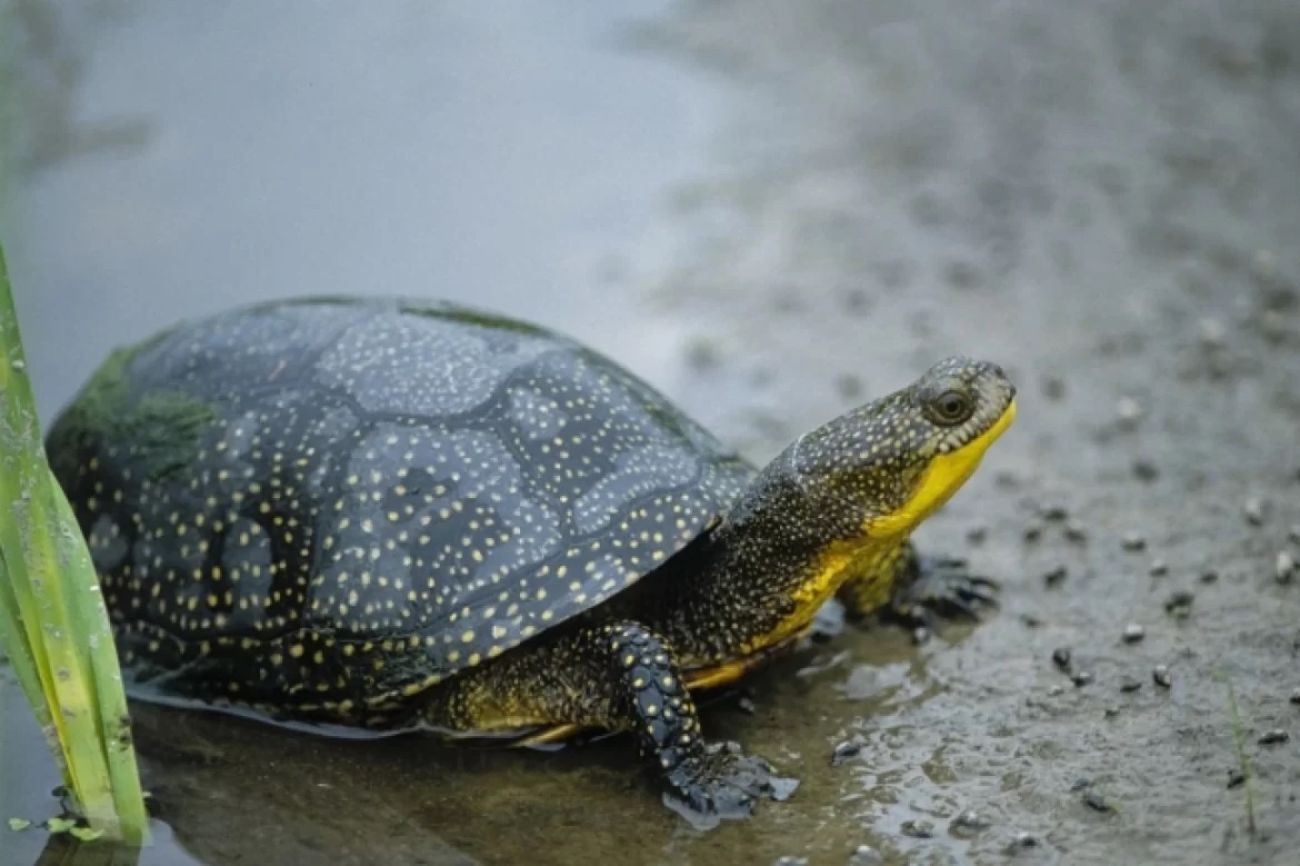Federal money to help Michigan begin slow work of rare turtle counts

State wildlife agencies in Michigan and Ohio have received nearly $500,000 in federal funding to study rare turtles.
The grant is part of more than $7 million distributed by the U.S. Fish and Wildlife Service to benefit rare and declining fish and wildlife and their habitats across the country. Other states receiving funding under the program this year include Minnesota, Iowa, Hawaii and North and South Carolina.
Michigan’s work will focus on Blanding’s and spotted turtles, two rare species that often occur in wetlands.

The funding will allow researchers to understand how the populations of both species are doing, especially the survival of nests and baby turtles.
Biologists had previously thought Blanding’s turtle populations were doing well in Michigan, according to Yu Man Lee, a conservation scientist with the Michigan Natural Features Inventory.
“A lot of people see Blanding’s turtles, they tend to move a lot,” she said. “They show up in more urban, suburban areas. In people’s yards.”
But scientists haven’t been finding many young turtles in recent years, and nests have high predation rates.
Spotted turtles are not as widespread in Michigan as Blanding’s turtles, Lee said. Both species are currently under review by the Fish and Wildlife Service for potential listing under the Endangered Species Act, with a decision expected later this year.
The main threat to both turtles is habitat loss. According to Michigan’s Department of Environment, Great Lakes and Energy, the state had lost nearly 40% of its wetlands by 2005.
While wetland loss has slowed after passage of Michigan’s Geomare-Anderson Wetlands Protection Act in 1979, regulators say the habitat loss is still outpacing efforts to restore or create new wetlands.
One aspect complicating conservation efforts is that both turtles need dry sites next to wetlands for nesting.
Related:
- Moose bone study in Michigan offer insight into aging: Turns out, it stinks
- MSU has audacious goal: Cattle production that actually helps water quality
- Sault Tribe restocks U.P. waterways with walleye, whitefish
The females typically dig nests in open sandy areas, Lee said, but many suitable sites next to wetlands have been shaded out by too much vegetation or lost to human development. Some turtles are hit by vehicles when they try to cross roads to reach nesting areas.
Other threats include raccoons or other predators that disturb nests or eat turtle hatchlings, and the illegal pet trade.
Climate change may be another factor impacting nesting success. Studies are underway to determine if recent changes in weather patterns could be contributing to the lower survival of eggs and hatchlings.
Turtles are an important part of the ecosystems they occur in, Lee said, and losing them could cause negative consequences for the habitats.
“They’re all tied together, everything is all connected in these ecosystems,” she said. “I think they’re just also these really cool and unique species.”
Lee said the turtles don’t reach adulthood until they are between 11 to 20, depending on the species, and they can live to be more than 100. She said a study in southeast Michigan found what was believed to be a 90-year-old female still laying eggs.
The grant will provide needed funding to enable researchers in Michigan and Ohio to study the turtle populations, protect nests and baby turtles and restore their habitats.
Michigan’s Wildlife Action Plan lists more than 300 rare or declining animals as “species of greatest conservation need.” Lee said she worries there isn’t enough money to fund work on all of them.
“This grant program has definitely provided really critical funding to work on these species,” she said. “If we didn’t get this grant we would be scrambling for sure.”
Ruth Thorton is an environmental reporting intern in a collaboration with WKAR Public Media and the Knight Center for Environmental Reporting. This story originally appeared on WKAR Radio.
Michigan Environment Watch
Michigan Environment Watch examines how public policy, industry, and other factors interact with the state’s trove of natural resources.
- See full coverage
- Subscribe
- Share tips and questions with Bridge environment reporter Kelly House
Michigan Environment Watch is made possible by generous financial support from:
Our generous Environment Watch underwriters encourage Bridge Michigan readers to also support civic journalism by becoming Bridge members. Please consider joining today.
See what new members are saying about why they donated to Bridge Michigan:
- “In order for this information to be accurate and unbiased it must be underwritten by its readers, not by special interests.” - Larry S.
- “Not many other media sources report on the topics Bridge does.” - Susan B.
- “Your journalism is outstanding and rare these days.” - Mark S.
If you want to ensure the future of nonpartisan, nonprofit Michigan journalism, please become a member today. You, too, will be asked why you donated and maybe we'll feature your quote next time!






